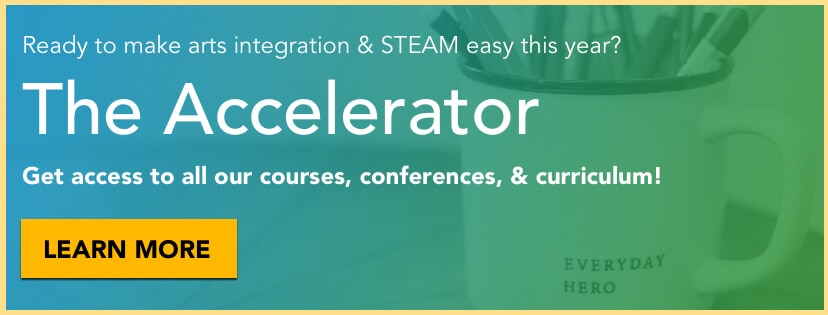Lesson Overview
I’ve Got Rhythm
GRADES K-1 MUSIC AND ART
Often, when we look at arts integration, it’s between an art form and another content area. But we can also integrate across the arts! In today’s arts integration lesson, we’re looking at the concept of rhythm in both music and visual art.
This is a perfect lesson for our early childhood students in K-1. This is the time when they are really experimenting with the elements of the arts. It’s a foundational period, so making connections on the same elements across art forms is helpful.
Lesson Process:
Step 1: Listen to the piece Rite of Spring from Stravinsky and ask students to move however they feel based on the music. When finished, ask them to describe how the music made them feel and how it felt when they were moving.
Step 2: View sample works from Jackson Pollock and Vincent Van Gogh. Ask students what they see. How would they move to each of these paintings? What kind of music would be playing for each of these paintings?
Step 3: Describe that music and art both have something in common: rhythm. Rhythm has a bit of pattern and repetition. In art, you can see that in how an artist uses line, color or techniques. In music, it’s the regular or irregular pulses. Listen to the Rite of Spring again and see if students can find the pulse of the music – tap it on their bodies or the floor. This is the beat. Then, have students tap every time they hear a note – this is the rhythm.
Step 4: Create a rhythm board for various pieces of music. Split a piece of heavy construction paper into 4 segments using tape. Load up a music playlist and have students paint one of their boxes based on the music that is playing. Change the music and have students fill in another box. They can select different brushes or colors, but have them try different lines or techniques in each box. Repeat until all boxes are filled.
![]() Time Required:
Time Required:
30-45 minutes
![]() Materials List:
Materials List:
- Rite of Spring music
- Music Playlist
- Images of artwork by Jackson Pollock and Vincent Van Gogh
- White construction paper
- Tempera sticks
- Paint
- Paintbrushes
![]() Assessment:
Assessment:
Diagnostic Assessment Checklist. Look for student’s current knowledge of the following:
- Observing a piece of art and a piece of music.
- Responding to different music using different art elements (line, color, etc)



